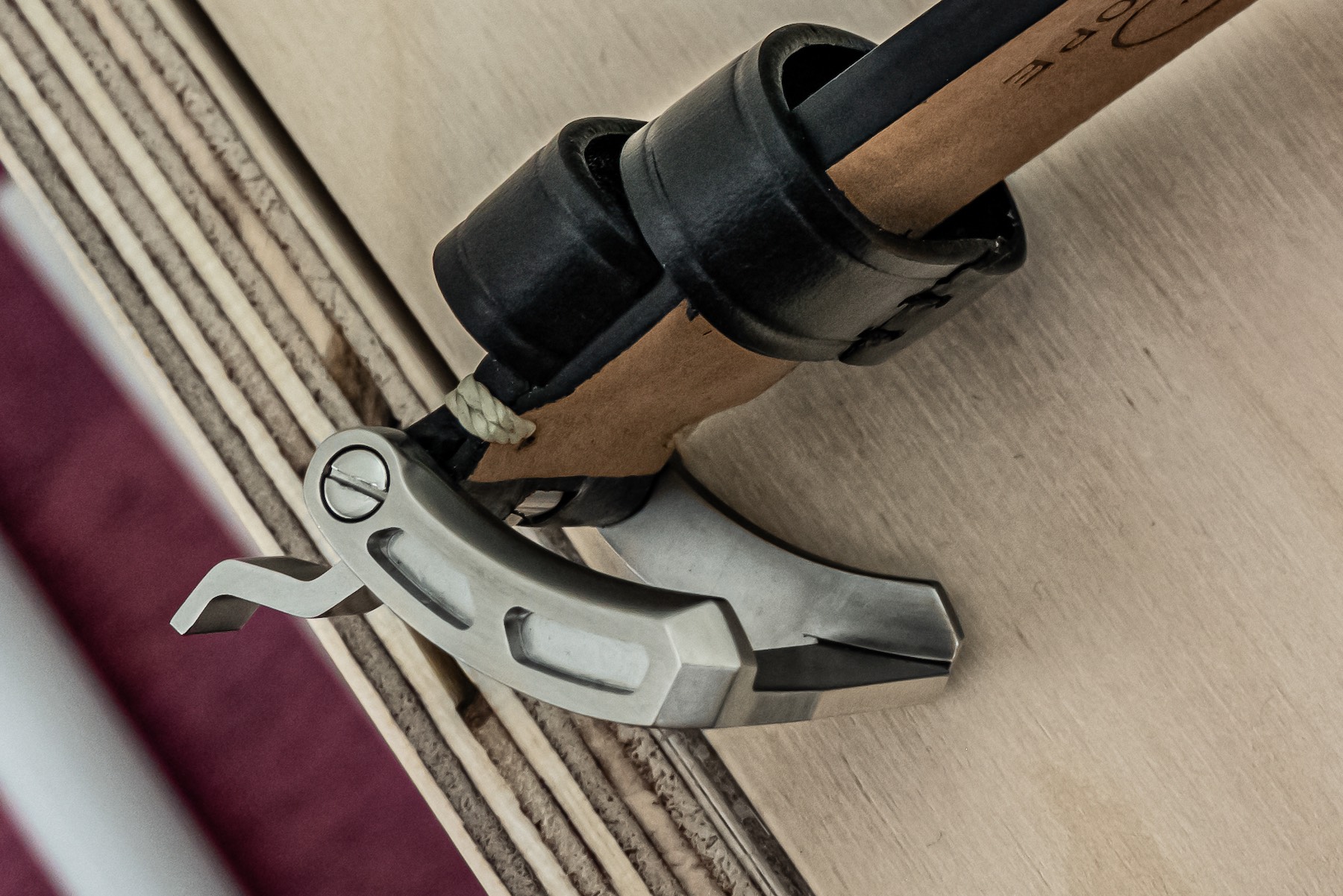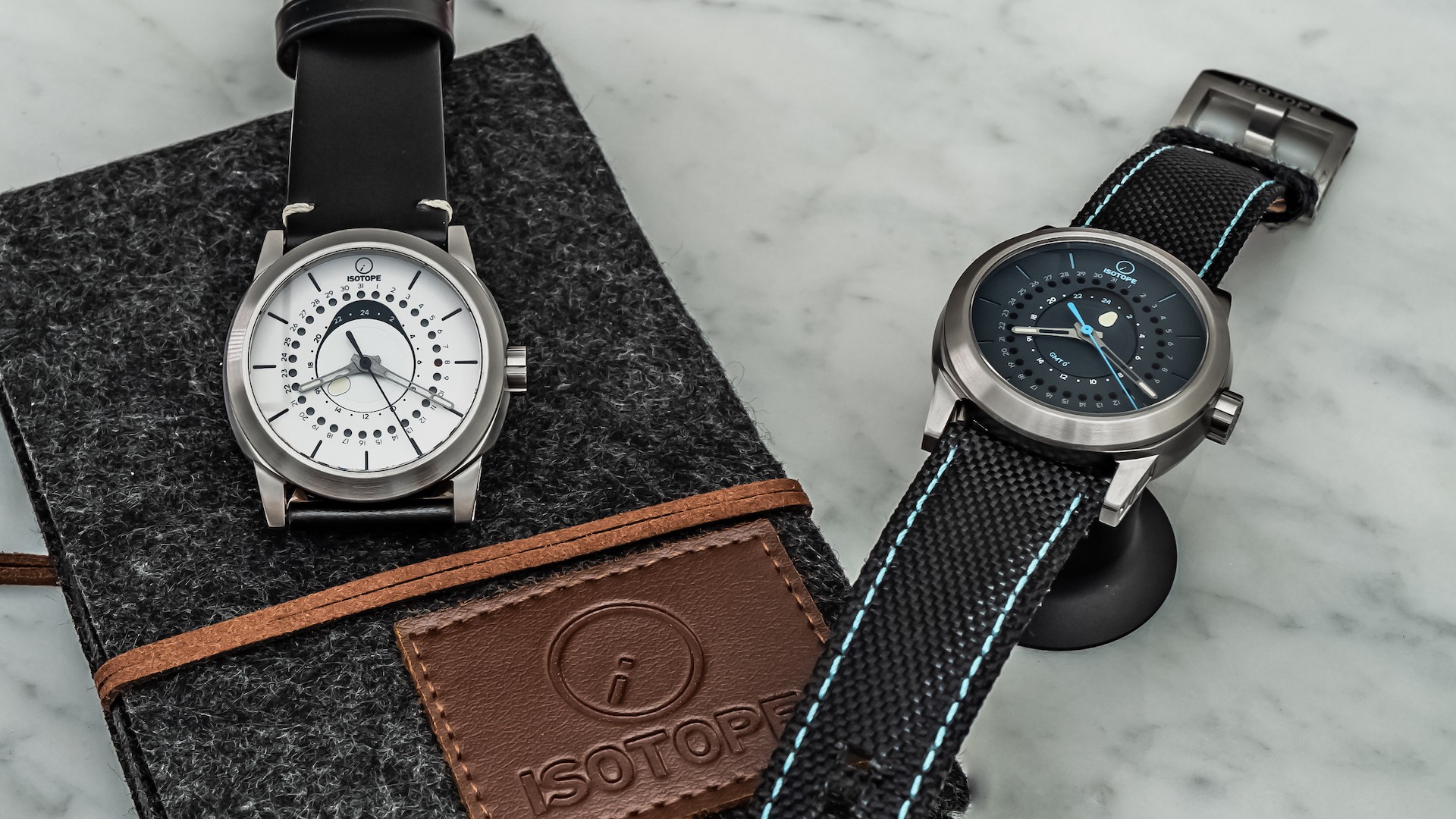
British-based Isotope has been around since 2016, and the GMT 0º is the brand’s third and latest offering. I’ve known about the brand peripherally, but this new model was the first I got to handle in the metal. Everyone knows I love a unique or interesting dial, but I also understand mechanical watches with those adjectives tend to carry serious price tags. With a price under $1,000, the Isotope GMT 0º is at least worth a look for anyone like me with a soft spot for the offbeat.
First, a note about the two prototypes you see here. I received two review units, one in blue and one in white. Off the bat, brand founder José Miranda let me know that there were a couple of imperfections in the prototypes, mainly that the date dot on the blue dial model needs to be brighter, and the lumed GMT “Lacrima” pointer on the white dial model isn’t perfect. Fortunately (and ironically), the date dot on the white dial model is correct, and the lume on the blue dial GMT pointer is correct, so I’ll show the correctly finished dot and pointer here as these reflect what the finished product will be like. If this was a larger brand, I’d likely ask for a pristine prototype, but I was a bit torn here because I do understand smaller brands have restrictions and I do genuinely enjoy the Isotope GMT 0º. So, bear with me regarding these aforementioned imperfections.
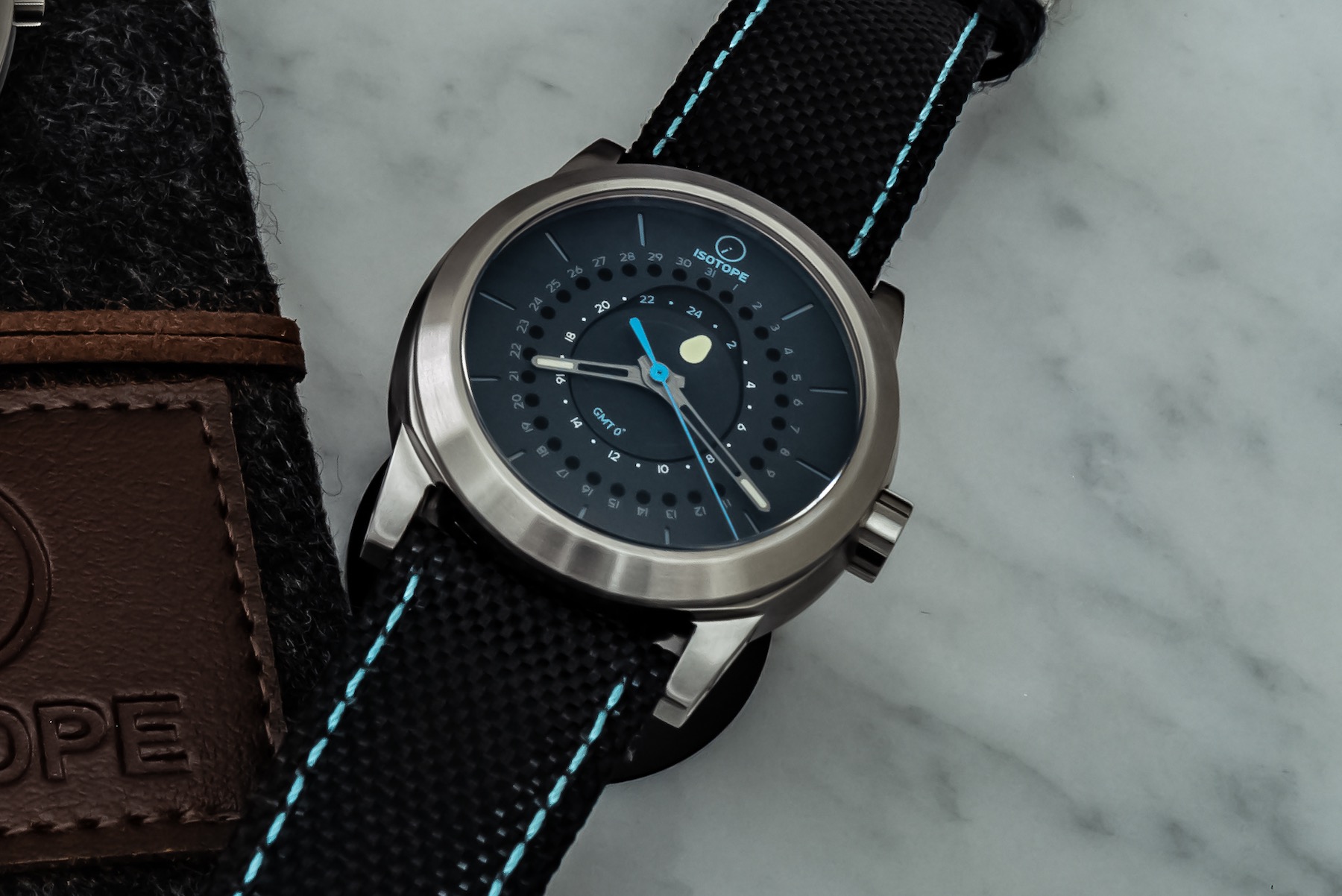
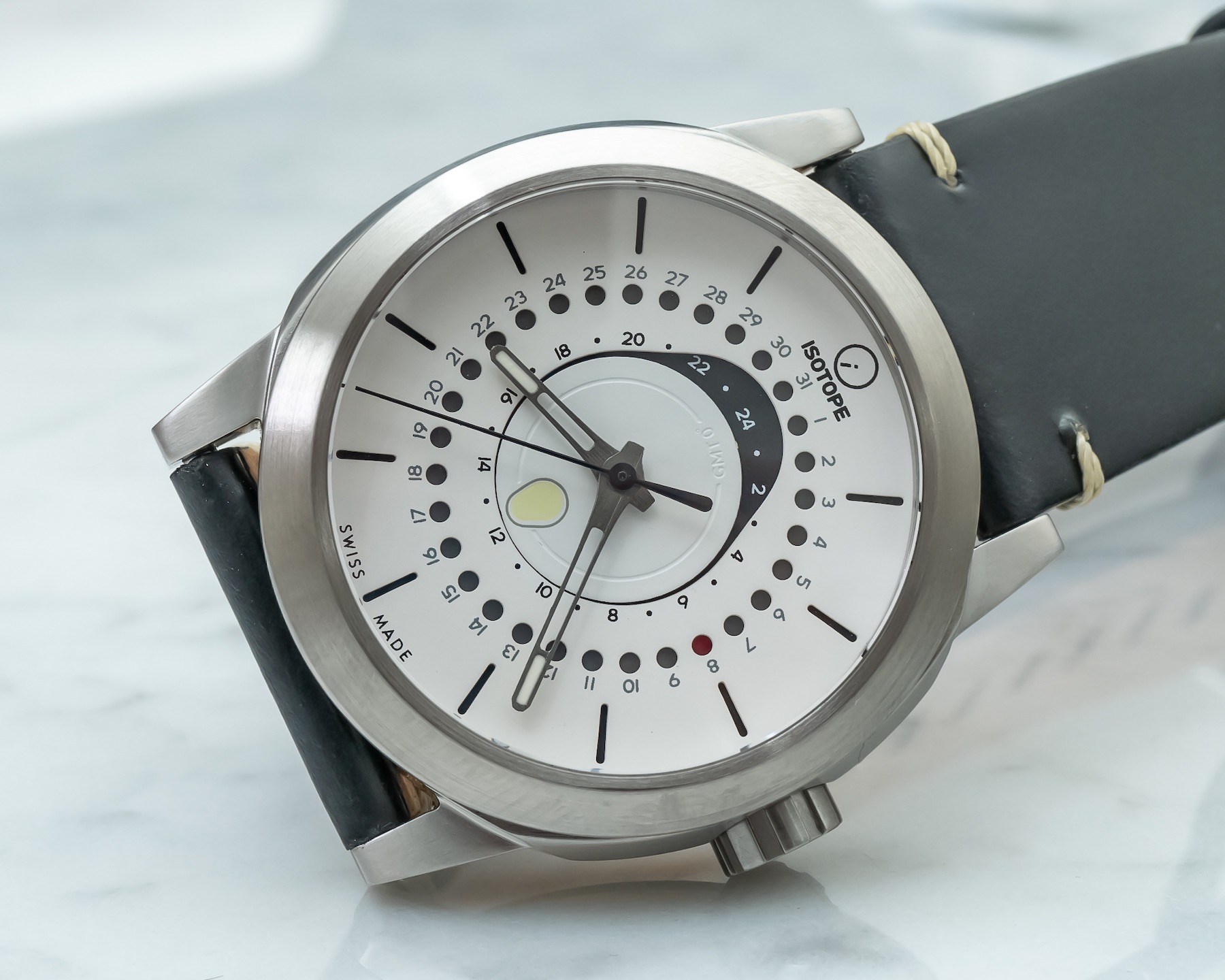
When I first looked at the Isotope GMT 0º, Ochs und Junior and even a little bit of Itay Noy immediately came to mind (though Miranda cites the Alexander Burhans Orbit and Swatch Balise as inspirations). The common thread is a very specific deconstructed (sorry, I hate that word but it applies here) aesthetic that is serious about design from brands that don’t take themselves too seriously. The issue, as usual, is price. Ochs und Junior watches easily hit five-figures and Itay Noy is in the mid-to-high four figures. Of course the materials and level of finishing on these puts them in a much higher bracket than Isotope, but if you’re like me and enjoy this kind of idiosyncratic design, then Isotope is one to at least just keep an eye on.
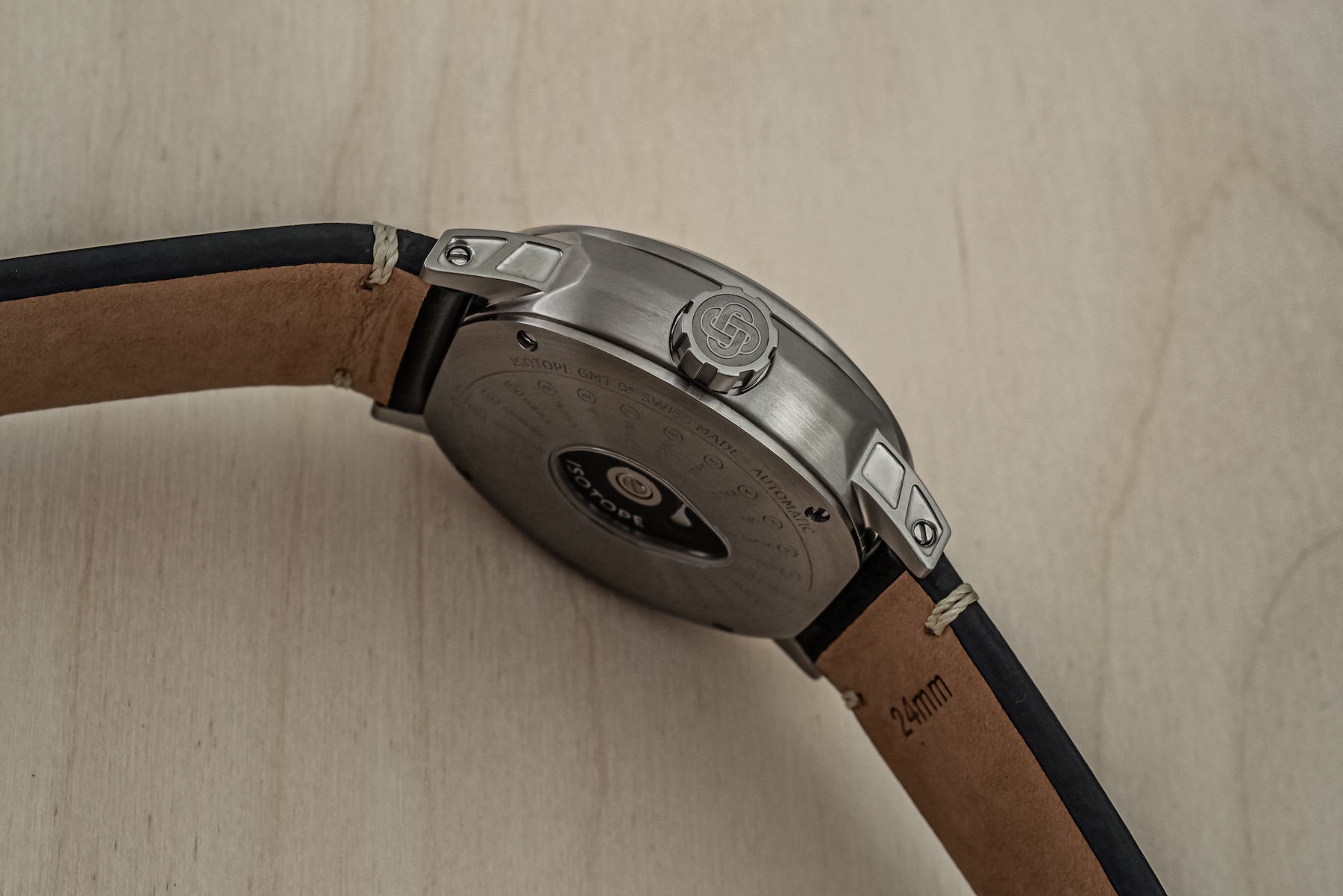
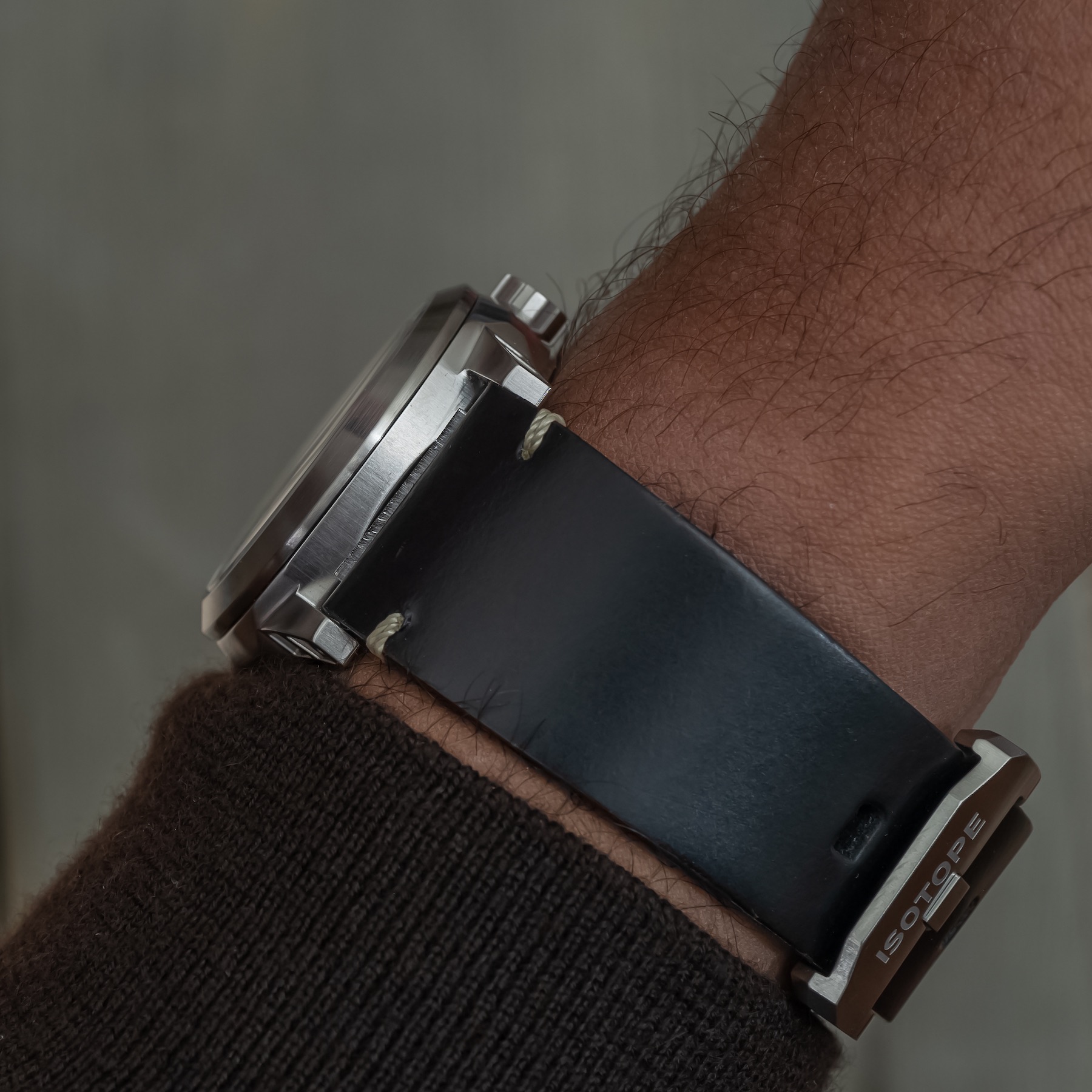
Though it’s imperceptible to my eyes, the steel case isn’t really a circle but rather an oval meant to evoke the shape of a zero. So, while it’s 41.5mm-wide, the case height is 39.5mm. The lug-to-lug height is 44.7mm, and thickness is 14.2mm. In a perfect world, the case would be thinner, but at least the rest of the proportions keep the size in check. Lug width is 24mm, though I would have gone with 22mm here, personally, as I am not a fan of super-wide straps. Oh, and the GMT 0º does get 200M of water resistance, which is quite good.
The lugs and strap buckle have some nice, almost industrial, finishes that help the chunky case look a bit sharper and do a decent job at upping the in-the-metal quality.
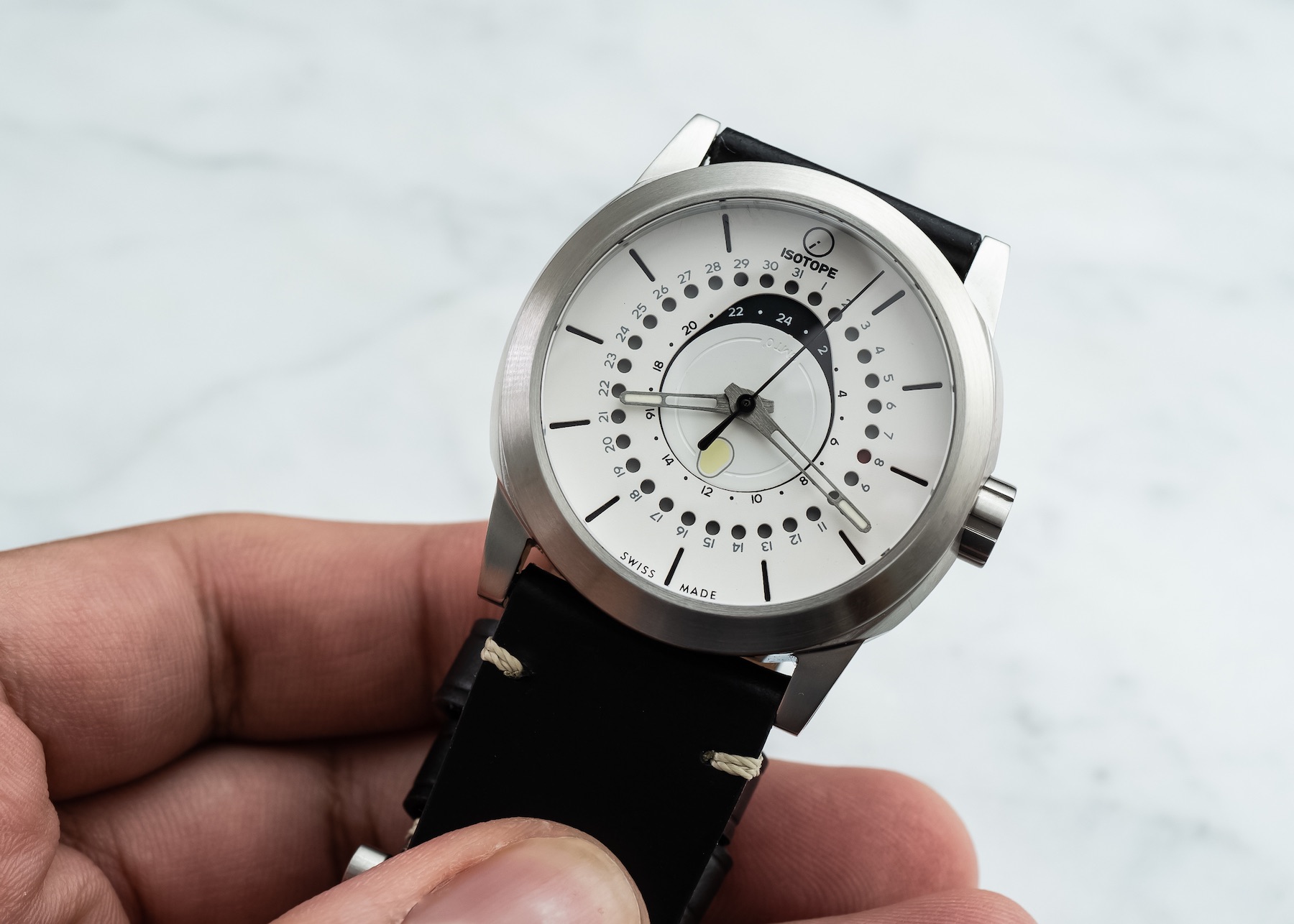
Now, the dial. Reading it is simple enough, with the outermost ring made up of 31 drilled dots with a (too dull) red dot indicating the date. As I previously mentioned, Miranda told me they will use a more vibrant red in the production models. Personally, I wouldn’t make it too bright, as I found the white-dial date indicator to be legible but not so glaring as to look like Rudolph’s nose.

Pulling the crown out to its second position and turning clockwise adjusts the date while turning counter-clockwise adjusts the central disc with its lacrima-shaped GMT pointer at the center of the dial. It’s pretty easy to read, and there is something about that teardrop shape that I just enjoy. I do take the brand at its word when I was told the improper lume on the white-dial lacrima of this prototype won’t happen in production models.
No, it’s not a “true GMT” but those are pretty tough to find at this price point, especially when a movement is significantly modified. Ultimately, the Isotope GMT 0º is simple to use while having a distinct and overall very cohesive design language — that’s not easy and deserves praise.

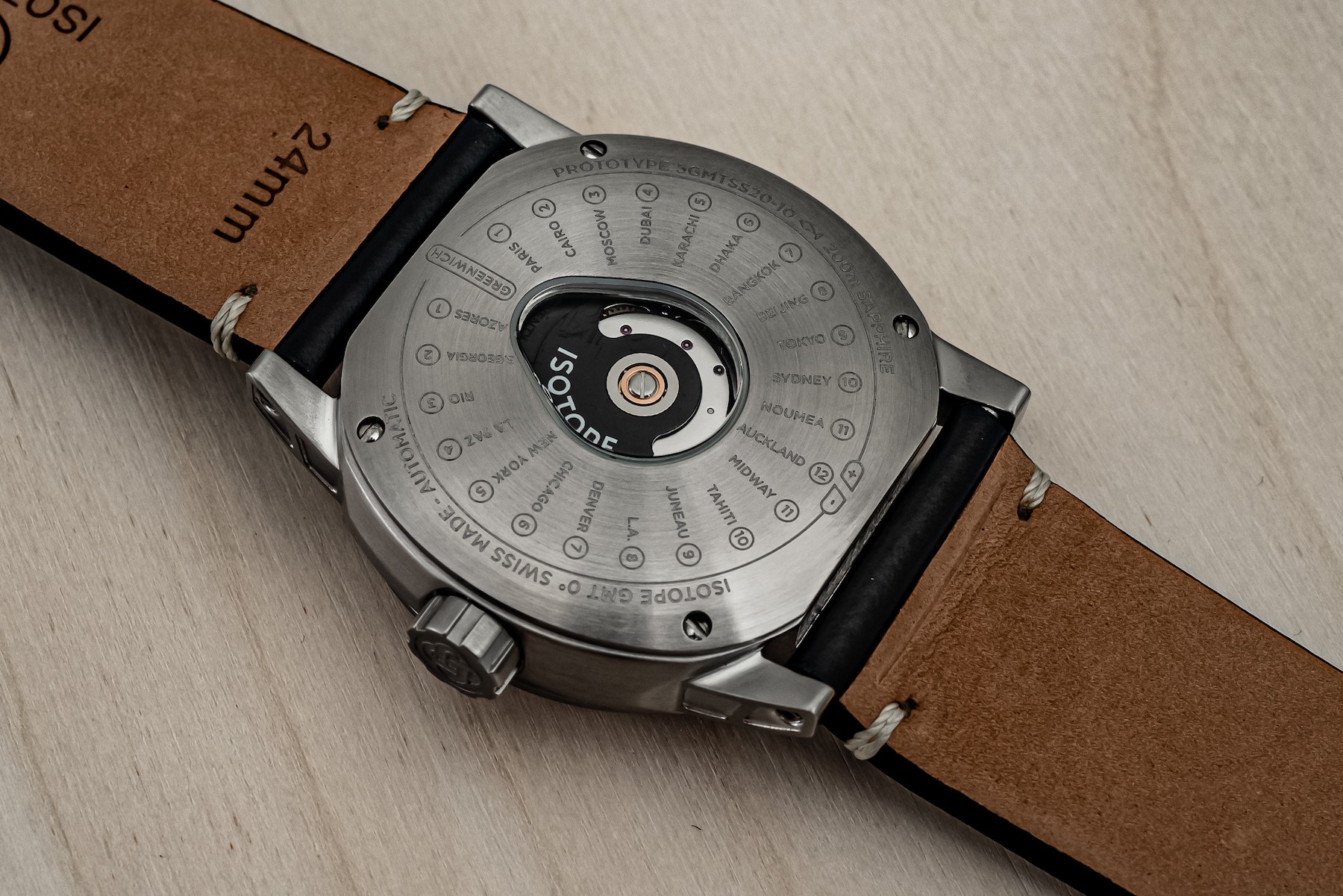
Turning the case over shows, what else, a small lacrima-shaped exhibition window with a branded rotor surrounded by the names of major cities corresponding with their time zones. I am always in favor of saving the costs of dressing up a mediocre movement with middling finishing, and overall, I approve of how Isotope approached this. The movement they use is an automatic Swisstech S24-45 which is essentially an ETA 2824-2 clone. I know Swisstech is based in Hong Kong, but they say this movement is Swiss, which could mean several things that are ultimately not super important. Isotope modified the movement quite a bit for this watch, which actually may explain the case thickness. Operating at 28,800 vph, it is accurate to +12/-12 seconds a day and has a 40-hour power reserve.
No, it’s not the ideal movement, but considering how much it is modified and the price point, I am not going to knock Isotope too hard here. Also, there’s a three-year warranty that covers the movement.

I find myself rooting for Isotope because I respect what they’re doing and I recognize just how competitive the ~$1,000 market is. Frankly, that’s why I overlooked one or two rough edges on these prototypes that would ordinarily just have me shelve the article. If you’re like me and drawn to this design, Isotope is worth a look. The steel case Isotope GMT 0º will come in white, blue, olive green, and black dial and there will be two limited editions as well, with an olive green dial variant in a black DLC case and a special Ruby dial model. The standard models will be priced at ~$993, and each LE will be priced at ~$1,147, including a leather and Cordura strap. The watches will begin delivery in June 2021, and Isotope is offering a 15% discount for preorders, which prices them at ~$844 for the standard models and ~$975 for the limited edition. You can check them out here at isotopewatches.com.


